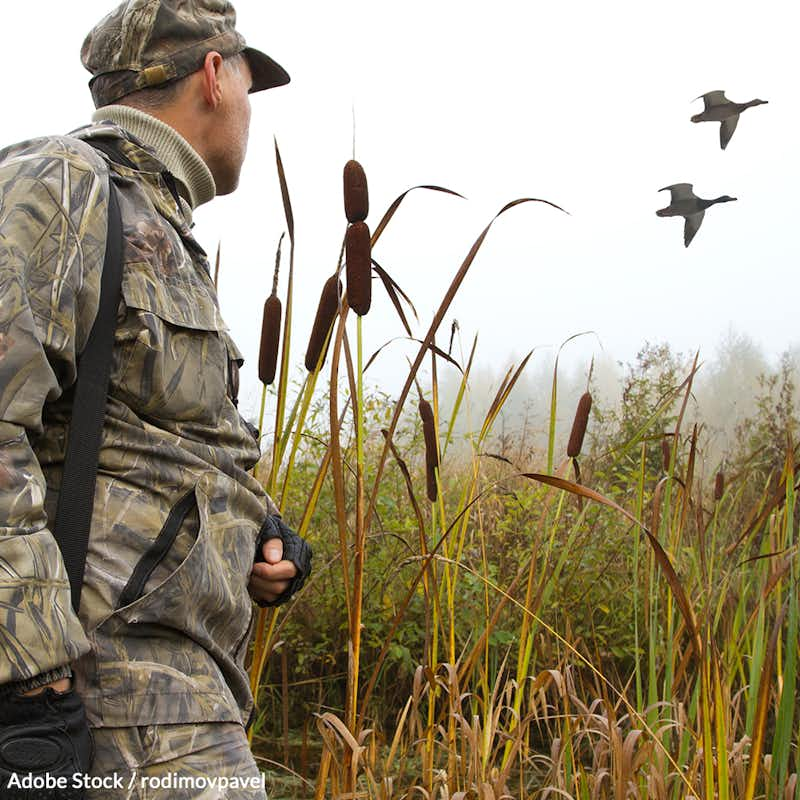Stop Lead Poisoning From Destroying Our Wildlife
11,902 signatures toward our 50,000 Goal
Sponsor: The Rainforest Site
Tens of thousands of tons of lead are being deposited into our environment every year, leading to serious disease and death.

The U.S. Fish and Wildlife Service issued a ban on the use of lead ammunition and fishing tackle in 2017, an Obama-era rule aimed at protecting birds and fish from lead poisoning. Within a few days, following the arrival of a new administration, the ban was lifted1.
Some argue that allowing lead ammunition and fishing tackle opens recreational opportunities to more than just wealthy landowners, but a 2012 study from the University of Guelph found the retail price for most calibers of lead bullets was comparable to their non-toxic counterparts3.
The Interior Department is responsible for managing the conservation of fish, wildlife and their habitat. That job covers about one-fifth of the land in the United States4. The allowance of lead ammunition and fishing tackle on more than 500 million of America's nearly 700 million hunting-approved acres can and has already had an impact on native fauna. Tens of thousands of tons of lead are being deposited into our environment every year, causing the deaths of between 10 and 20 million birds and other animals — including more than 130 species.4.
Lead poisoning from ammo is a major threat to the lives of endangered California condors, a fact which prompted the state to pass a bill requiring all lead hunting ammunition to be phased out by 2019. Bald eagles and other scavengers throughout the central and eastern U.S. are also frequent victims of lead poisoning from ammunition, ingesting bullet fragments found in carcasses5.
Humans who consume animals killed with lead bullets are also at risk. A 2009 study from researchers at the University of North Dakota School of Medicine found 59 of 100 randomly selected packages of ground venison donated to the Community Action Food Pantry in North Dakota in the fall of 2007 were contaminated with lead fragments6.
We've known for thousands of years that lead is a deadly toxin, yet it's only in recent decades that we've taken it out of gasoline, paint, and other substances. The lingering effects of lead pipes still pose hazards for communities, as we have seen in the ongoing crisis in Flint, Michigan, and elsewhere in the United States2.
The health of our country's fish, wildlife, and as well all Americans should not be threatened by lead poisoning. Sign the petition below and demand the Department of Interior ban the use of lead ammunition and fishing tackle on public lands.
- Valerie Volcovici, Reuters (2 March 2017), "New Interior head lifts lead ammunition ban in nod to hunters."
- Wayne Pacelle, The Humane Society of the United States (25 January 2017), "U.S. Fish and Wildlife Service says it?s time to ban lead ammo, fishing tackle on federal lands."
- Hayley Miller, Huffington Post (3 March 2017), "Interior Secretary Ryan Zinke Brings Back Lead Ammo In Parks And Refuges."
- Patrick Reilly, The Christian Science Monitor (3 March 2017), "Lead shot OK'd for federal lands: what does that mean for conservation?
- Erin Katzner, The Peregrine Fund (23 May 2013), "Winter results for Arizona-Utah condor program: preventable deaths remain focus of recovery effort."
- William E. Cornatzer, Edward F. Fogarty, Eric W. Cornatzer, Center for Biological Diversity (2009), "
The Petition:
To the Secretary of the Interior,
The health of our country's fish, wildlife, and as well all Americans is threatened by lead poisoning, a threat that can only be mitigated with your help.
The allowance of lead ammunition and fishing tackle on more than 500 million of America's nearly 700 million hunting-approved acres has already had an impact on native fauna. With tens of thousands of tons of lead deposited into our environment each year, between 10 and 20 million birds and other animals, representing more than 130 species, are dying out within the same span of time.
Lead poisoning from ammo is a major threat to the lives of endangered California condors, bald eagles and other scavengers throughout the central and eastern U.S. that ingest bullet fragments found in carcasses. Humans who consume animals killed with lead bullets are also at risk. A 2009 study from researchers at the University of North Dakota School of Medicine documented a health risk from lead exposure to humans who eat venison. The report found 59 of 100 randomly selected packages of ground venison donated to the Community Action Food Pantry in North Dakota one season were contaminated with lead fragments.
We've known for thousands of years that lead is a deadly toxin, yet it's only in recent decades that we've taken it out of gasoline, paint, and other substances. The lingering effects of lead pipes still pose hazards for communities, as we have seen in the ongoing crisis in Flint, Michigan, and the larger debate over crumbling infrastructure in the United States.
I demand you take a stand for our fish, wildlife, environment, and for the health of all Americans in banning the use of lead ammunition and fishing tackle on public lands.
Sincerely,
 Welcome Back! Log In to Continue
Welcome Back! Log In to Continue